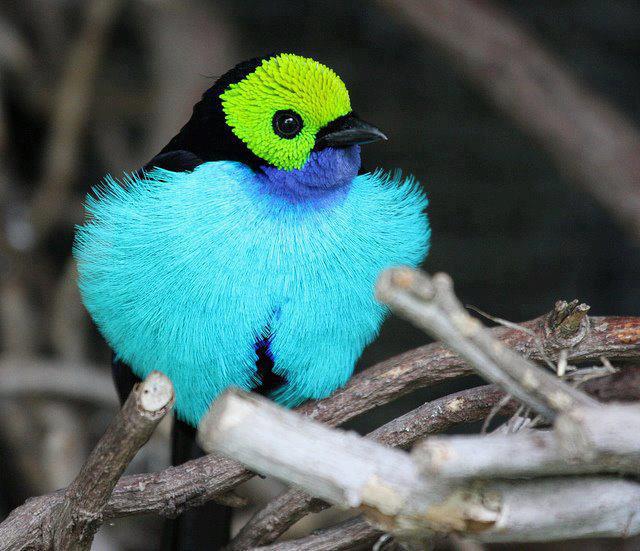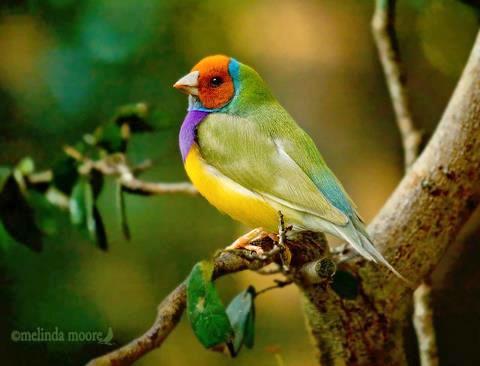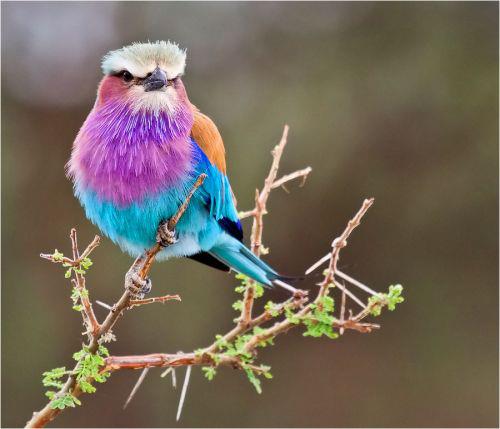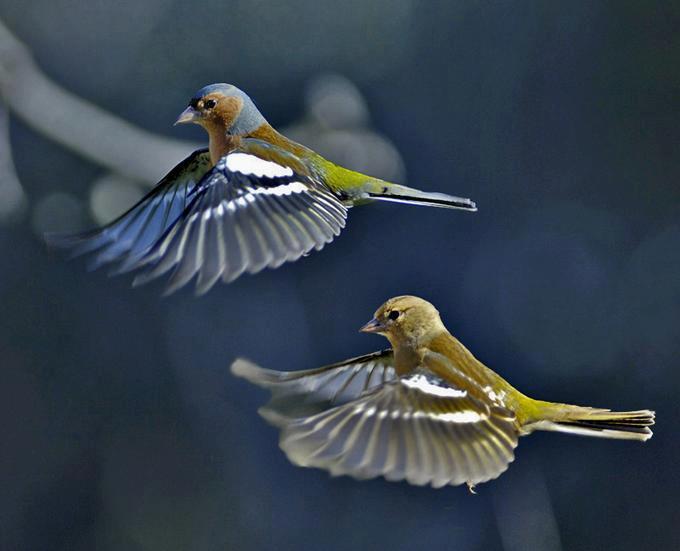




Birdies
We do not know what this world would be like to us if God had not made the birds to help to fill it with beauty, life, and song. Thinking of this some one has written these verses to show what a difference they make, and how much they add to our enjoyment:
"Fair was the blue sky overhead,
Fair was the earth below;
Soft as an infant's breath, the wind
Went wandering to and fro.
The creeping grasses clad the earth
In garniture of green;
A summer day more fair, more sweet,
The earth has never seen.
"Yet something still it seemed to lack
To satisfy my heart;
Lovely, but lifeless, as a thing
Created by some art.
But lo! I heard a gush of song,
The whirring of a wing,
And into happy, joyous life
The whole world seemed to spring."
Think of the awful silence of the world on that third day of time when the voice of God called forth from the earth the trees, plants, flowers, that clothed it with verdure and beauty. No song among the branches, no flutter of a wing, nor even the buzz of insects among the flowers.
But the earth that God had made so beautiful "He created not in vain; He formed it to be inhabited." And so He spoke again, and the same Word that was the seed of all the plant life of the earth also gave birth to myriads of living creatures to enjoy it.
First came the birds, to break the dread silence, and to wake into happy, joyous life the whole beautiful world. Have you ever thought that every little bird you see had, like yourself, its first parent in Paradise? For all the kinds of birds that God has ever made to live in this earth were brought forth at that time.
A gentleman who lately visited the South of France and enjoyed the bright sunshine, the beautiful scenery and flowers of that lovely clime, yet noticed particularly that there was no music,-the dear little song birds of our own land were missing. This is because so many of these tiny helpless creatures have been killed and used as food for man, that the few that are left are very timid and hide themselves at the approach of a human being.
If we could have been with Adam and Eve in Eden, and seen the birds of paradise, we could have learned easily much more than can now be found out about them with a great deal of trouble. For their beautiful nests are now as much hidden as possible for fear of other birds, animals, thoughtless little children, careless and cruel persons, who might steal their eggs or hurt their nestlings.
They usually find a sheltered nook where their nests are the least likely to be found, and they are very much afraid if anyone comes too near.
But by and by, in the happy time when "they shall not hurt nor destroy" in all the glad new earth for which we look, according to God's promise, the birds will not, through fear, try to hide themselves or their young ones from us. We shall then be able to watch them at work and learn all that we want to without making them afraid.
A good way to go "birds' nesting" is to take a Kodak if possible, and get a "snapshot" at all the nests you can find. In this way you can carry away nest and eggs and even the young birds, without causing any loss of life, or filling the breasts of the parent birds with anguish. And the pictures will give you just as much pleasure as the nests or eggs themselves, without causing any pangs of remorse or prickings of conscience.”
May 10, 1900 EJW, PTUK 298

Birdies
"Behold the fowls of the air; . . . your heavenly Father feedeth them. Are ye not much better than they?" Matthew 6:26.
In the country, in the city, on dry land, or on the ocean, wherever we go we find our feathered friends-the birds. What a quiet, lonely place earth would be without them! They fill the air with music, the trees with life and beauty, and our hearts with joy and gladness.
There are two kinds of birds, flying birds, and running birds. Those that fly very far and swiftly have the largest and strongest wings. One bird that has very long wings can fly so fast that it is called the "Swift." The humming-bird, the smallest bird that lives, can move from one place to another as quickly as a flash of light or a glance of the eye. The ostrich is the largest and strongest of all birds, but his wings are small and he cannot fly. Because he needs to run so much his legs are long and strong, and his bones are nearly as solid as those of a horse, while the bones of most of the flying birds are full little air-cells that make them very light.
Did you ever stop to think why we see so many more birds in summer than in winter? When it is about time for the cold weather to begin many of them gather into companies and fly off south across sea and land to a warmer country. Then when the snow melts and the warm spring-time comes, back come our little friends as bright and happy as ever. A Swift has been known to come back to the very same spot every year for seven years. The pretty swallows and martins often do the same.
Look at the feathery clothing of the birds. What can be more light, more dainty, and more beautiful? One bird has a jaunty cap on his little head, another a ruff round his neck, still another a white puff about his legs. One wears a soft inner garment of delicate down, and an overcoat of hair, another waddles along in greased coat, caring neither for rain nor a plunge in the brook. This little fellow still wears his baby clothes, while that one looks as proud in his new suit as a boy does in his first trousers; for birds get new suits once in a while as well as you. The Bird of Paradise is dressed very handsomely, and is more careful of its clothes than some children, for it will not allow a speck of dirt to get on them.
How busy they are! These are holding a grand concert. Those are having some kind of meeting. Yonder we see them fishing, hunting, butchering or diving. Here and there a few are mining, hammering, weaving, sewing, making beds, plastering, or building houses. We notice that many are getting dinner, or talking, whistling, chattering, or warbling. One is tolling a bell so loud that it can be heard three miles away (its cry sounds like a bell tolling). Another is carrying real letters for his master, and still another is barking like the dog, mewing like the cat, and trying to make every sound that he hears anyone else make.
If you wonder how they can do so many different things, just look at their skilful tools. Those that need to wade in the water have stilts, those that swim have paddles, those that get their food out of the mud beneath the water have feelers and strainers in their bills, and those that eat soft food have spoons. The woodpecker has a drill and a worm-puller; the Kiwi-kiwi a staff, the humming-birds insect catchers, long, straight, curved, or double-curved, to fit the flowers in which they find the insects. The hawfinches have broad seed-crushers, the Cross Bills nut-catchers, the Tailor Bird a sharp, slender bill for a needle, the owls night eyes. The Jungle Fowl has great feet for shovels, and the Jacana very long, slender toes for water that enable him to walk on shoes, floating leaves. The longer you study them the more you will see that each bird has been given just the tools that he needs.
What wonderful houses they build! and in what strange places we sometimes find them! They generally have but one room, but that of the Paradise Whidah bird has two, one for the sitting-room and one for the nursery; and the Sociable Weavers weave great hotels out of flat reeds and grasses, with thatched roofs, which sometimes have as many as three hundred and twenty rooms, each containing a separate family of birds. The Golden Eagle has a neighboring ledge of rock for his larder or pantry, where he keeps the food that he has brought until it is needed. The Jungle Fowl shovels up a mound or oven, sometimes fifteen feet high and sixty feet round, in which to keep its eggs warm. The Tailor Bird with its long bill and little feet makes thread out of cotton and sews the edges of two leaves together and then puts his nest in the little pocket he has thus made. The Oriole hangs in his nest from the branches of a tree and sews it together with horse hairs or strings. The Kingfisher makes his nest of fish-bones, and the Esculent Swallow makes a nest that is thought to be very good to eat! The nest of the humming-bird is hung like a tiny cradle to a twig and it rocks back and forth with every breeze. What a cozy home with its silky walls and downy bed! Birds kill so many insects, worms, mice, flies, snakes, etc., that they are a great help to the farmer and gardener. Their feathers make good beds and pillows, and the eggs of some are good for food. One ostrich egg is as large as twenty-four hen's eggs, and the shell is so strong that it is used to carry water in. See if you can think of anything else for which birds are useful.
The same One who made the water animals of which we learned last week, made these wonderful birds. And he made them on the same day that he made the water animals. Can you tell, now, when the birds began to live, and who made them? This same wise, loving Being who made and clothed and gave tools to the birds, teaches them how to use their tools, and He scatters their food over the earth for them to gather. He says that He does not forget one little sparrow, and therefore we need not fear that He will forget us, for we are worth more than many sparrows. Let us always think of this precious promise when we look at the little birds.”
January 4, 1894 EJW, PTUK 13

